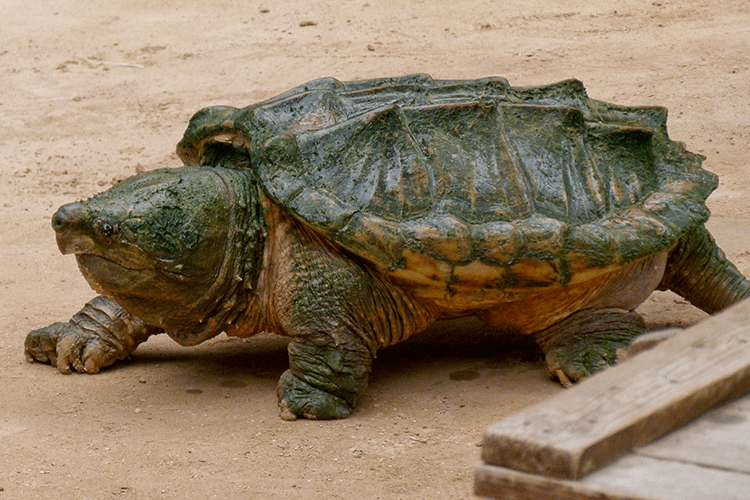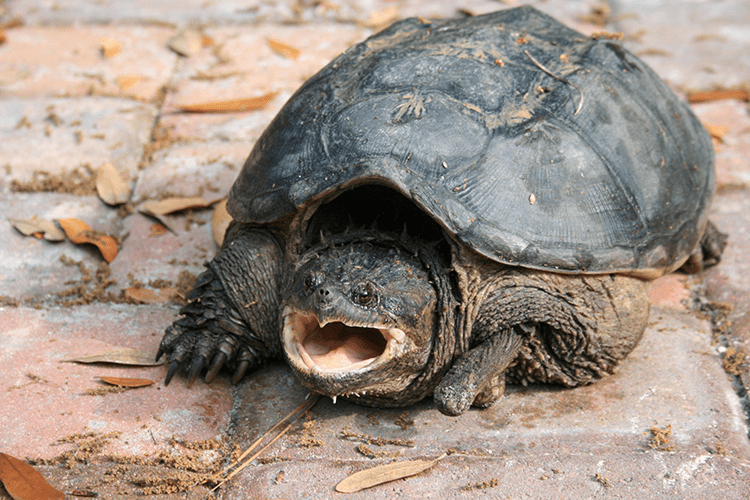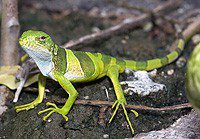
Cayman turtle
The caiman tortoise is a serious pet for serious people.
These turtles grow very large and throughout their lives have a very obstinate character, as can be judged by their name alone. Nevertheless, these are very spectacular and completely unpretentious pets that feel great in a home environment.
The caiman tortoise, due to its spectacular appearance and unpretentiousness in keeping, is very popular among lovers of exotic pets. The length of the shell of a caiman tortoise is on average up to 45 cm, and the weight is up to 14 kg (and sometimes more).
In general, this is a rather large, stocky turtle, with a voluminous head, slightly bulging eyes, strong jaws, powerful paws with strong claws and an incredibly strong, rough shell, decorated with bumps and depressions. Both in nature and in captivity, caiman turtles are distinguished by an aggressive character and, in case of danger, they actively defend themselves, sharply throwing their heads towards the enemy and biting him with their powerful beak.
Caiman turtles are brown, cream and black in color. These are strong, spectacular animals that fascinate with their wild beauty.

Lifespan
The maximum lifespan of a caiman tortoise has not been established, but the average minimum with proper care is 20 years.
Features of maintenance and care
Despite their pronounced aggressive nature, caiman tortoises are wonderful exotic pets that do not require complex care. They feel comfortable in captivity, calmly endure cool temperatures, are not picky about food, and besides, they breed calmly even at home.
In order for the caiman tortoise to be comfortable, it will need a large aquaterrarium with a piece of land, above which it is necessary to install a heating lamp (but not too low) and an incandescent lamp. Cayman turtles like to climb along the shore and from time to time bask on the shore – this is very good for their health.
Water hardness, pH and various decorations do not affect the unpretentious turtle. However, contaminated water is the main source of various pet diseases, so you will need strong filtration and frequent water changes.
Since the caiman turtle has a very obstinate character and really strong jaws that can cause significant damage, one turtle is kept in one terrarium and it is categorically not recommended to add neighbors to it. In 99,9% of cases, they will be her prey.
Mating in caiman turtles occurs in the spring and it is recommended to plant two individuals to each other only for this period, while the rest of the time it is better to keep them separately.
Cayman tortoises are omnivorous, in their natural habitat they feed on almost everything they can catch. In captivity, caiman turtles are fed prepared food, fish, frogs, larvae, insects, and plant foods.
Before buying a caiman turtle, you need to carefully weigh the pros and cons. It should be borne in mind that these pets grow very large and throughout their lives are not famous for their friendly character. Such seemingly well-known characteristics of caiman turtles often become an unpleasant discovery for irresponsible owners who, having played enough with an exotic pet, are in a hurry to get rid of it and often release the turtle into the nearest body of water. In our climate, caiman tortoises die quickly, but if they survived, they would no doubt cause great harm to their neighboring species. When starting such a large, peculiar animal, it is necessary to understand one’s responsibility both to him and to those around him.
Distribution
Cayman tortoises are native to the southeastern United States and Canada. As habitats, animals choose rivers and ponds with a muddy bottom, into which they dig during hibernation.
The hardy caiman turtles are one of the most popular terrarium dwellers among exotic pet lovers.






